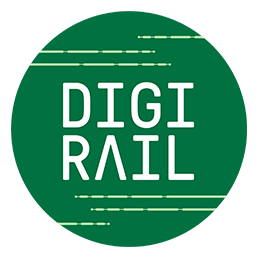ETCS field testing has been successfully carried out on the Kouvola-Kotka-Hamina test track (KoKoHa). In just over two years, tests will be conducted on the first commercial track (EKA) on the Tampere-Pori/Rauma section. What types of tests have been done in practice? And what lessons have been learnt from the tests and how will they be utilised in the future?
Over the past year, the Digirail testing team successfully performed and coordinated ETCS tests on the KoKoHa (Kouvola-Kotka-Hamina) test track for a total of more than 50 days. The test track plays a major role in the Digirail project, as the test track provides a concrete environment with an actual track and locomotive including ETCS unit. This enables an optimal learning environment and a tool for developing ETCS competence in Finland.
The tests were divided into three different types, and the different teams at Digirail were responsible for preparing, implementing and evaluating them. The technical tests focused on ETCS functionalities and the aim was to gain practical experience with the ETCS solution as well as increase the competence of Digirail’s technical team. Brake curve tests were used for testing brake curve behaviour and finetuning its parameters. Operational tests, on the other hand, focused on the ability of end users to efficiently operate the ETCS line. Unlike technical tests, operational tests combined the technical features of ETCS with instructions for use and end-user training.
Lessons learned for the EKA track section and the implementation phase
Valuable lessons were learnt from ETCS testing for the EKA track section and also for the implementation phase later. ETCS testing requires a systematic approach to work, which is why it was important to develop repeatable and scalable processes, or “replicable” processes, and to clearly define an organisation where roles and responsibilities are divided in a precise manner. Planning and coordination were also crucial.
“The process created for the KoKoHa testing proved to be efficient and scalable for different stakeholders and testing teams. This is a significant achievement as the process can now be applied to the EKA track section project and later also to the implementation phase. Digirail now has solid expertise in the design, implementation and evaluation of ETCS field testing and this expertise is transferable to the following projects,” says Marion Magnus, Testing Coordinator.
Another very important lesson was the clear and robust process generated for troubleshooting. This means that any problems that surface must be handled thoroughly, reviewed carefully and monitored closely both within the supplier’s process as well as Digirail’s project operations.
“Our methods for managing troubleshooting are constantly evolving, and the goal is to find a process that is applicable and scalable for the EKA project,” says Magnus.
The third lesson learned was the engagement of stakeholders. Coordination and open communication are essential as stakeholders are directly involved in testing and it is important that all parties are always up to date on what is happening at the testing site.
Outlook for the future
Next, we will be turning our eyes toward 2025 when it is time to define the scope of the tests and combine the testing targets of the different stakeholders.
“We have developed an established and proven ETCS testing process and are happy to support other Digirail projects by making our expertise and experience available. Based on this year’s tests, we are preparing a comprehensive set of documentation on the testing processes to support the EKA testing organisation and instil procedures and our work culture into practice.”
